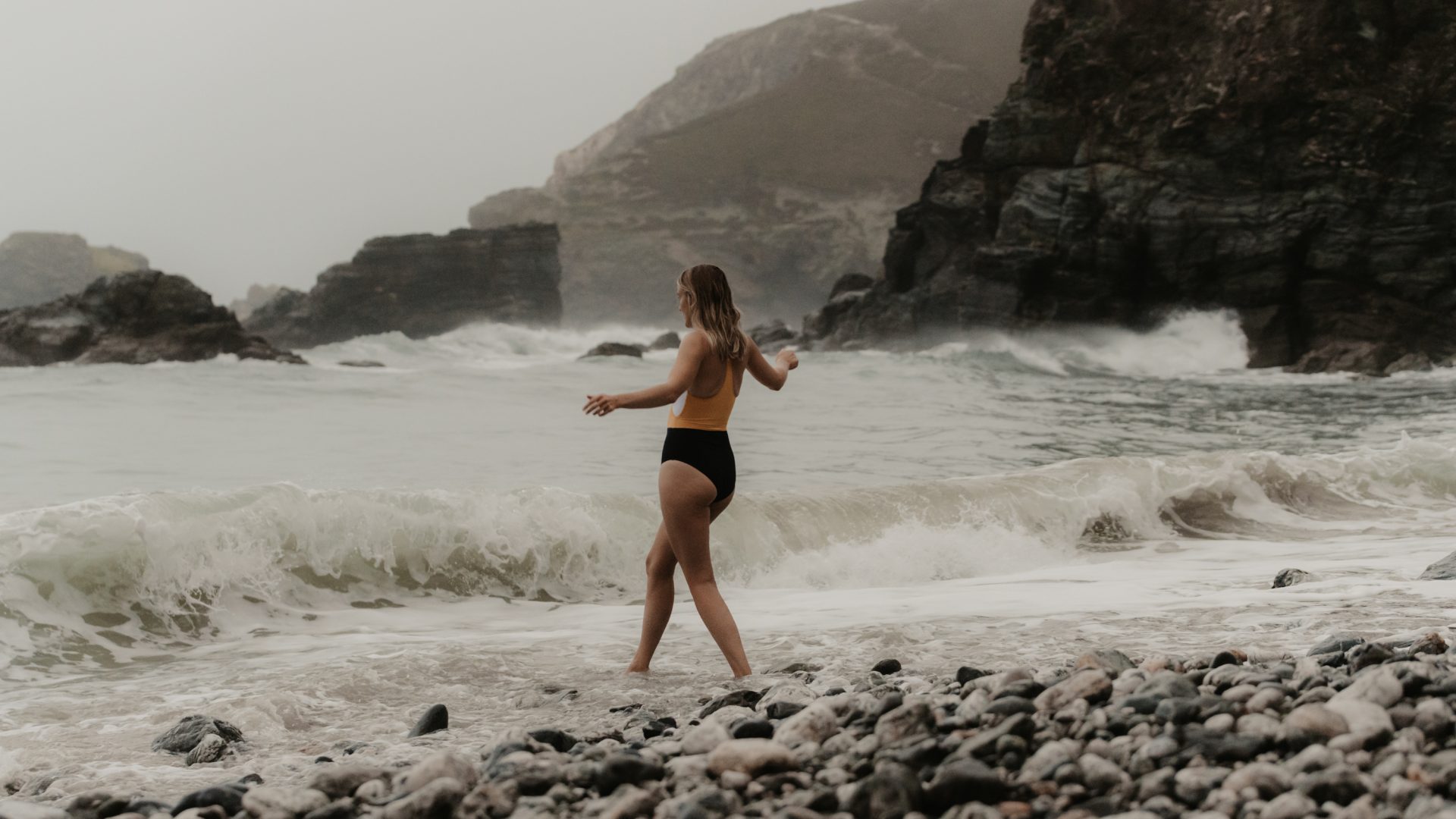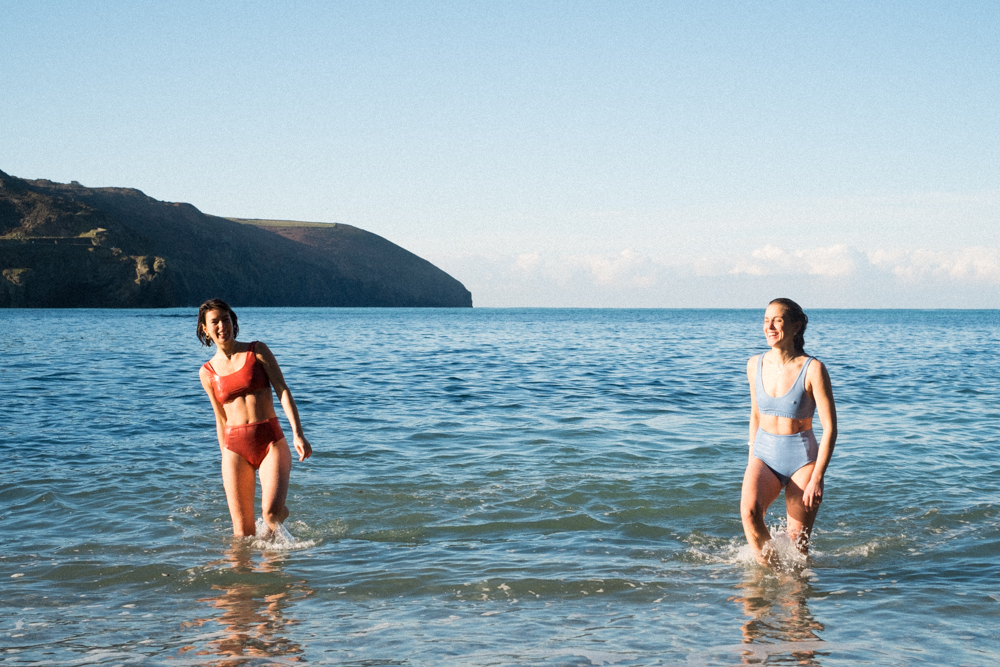
Dip, Donate and Nominate: Read these tips before you dip
Support SAS on your next cold water swim!
Whether you’re a seasoned wild swimmer or just thinking of dipping your toe in the water, Dip, Donate and Nominate is the perfect time to take the plunge. Taking part is easy:
-
Dip in cold water and share a snap or a video on social media, tag us @SurfersAgainstSewage and use the hashtag #DipDonateNominate
-
Donate £5 to Surfers Against Sewage
-
Nominate 5 friends to do the same
Before your swim, read this important safety advice from Sophie Hellyer. The surfer, swimmer and founder of Rise Fierce shares what to expect if you’re a first-time wild swimmer.

Credit Zoe Morton
Benefits
Did you know cold water swimming is known to boost fitness, mood, the immune system and libido? New studies are even showing that it could slow the onset of dementia, and cure depression and anxiety.
Whilst there’s a wealth of benefits to cold water swimming, scientists don’t know exactly why yet. It could be because of cold water itself, the ‘Blue/Green therapy’ of spending time outdoors, or that cold swimming provides a distraction from the stress of day-to-day life.
The current theory is that the vagal nerve stimulation + serotonin release that occurs when in cold water can decrease the inflammatory response, which in turn may have beneficial effects on symptoms of depressive disorders and health issues linked to inflammation, such as Alzheimer’s and type-2 diabetes.
Science aside, a cold dip makes me feel amazing, and most of all it’s fun!
What to wear
Whatever you feel comfortable in! You could go for a swimming costume or wetsuit, or opt for a combo of a cossie with neoprene boots and gloves. Don’t feel pressured into swimming without a wetsuit, safety is the most important thing.
It’s also good to wear a brightly coloured swim hat (and a tow-float if in you’re in flat water) so you’re visible. Studies on visual contrast show bright orange is the best colour to be seen in the water.
What to expect
Humans are tropical animals that want to be near-naked in a 28°C air temperature, so plunging into water that is 14°C or below puts severe stress on the body.
The normal reaction is ‘cold shock’ – where the breathing and heart rate increase dramatically on entering the water. Hyperventilating in water can be dangerous, so it’s important to enter the water slowly and control your breathing. Focus on slow, steady breaths and long exhales. This will help to trigger your parasympathetic nervous system and keep you calm – the cold shock will pass in a minute or so.
You can acclimatise to cold water by going for regular short dips. As little as five or six two-minute immersions can half your cold shock response, so you’ll find it easier and easier to get into the cold water. But don’t stay in too long. However experienced you are, the time you can spend in the water before you’re physically incapacitated doesn’t lengthen, and if you stay in too long you may feel your arms and legs start to get heavy and tired.
Less is more in terms of cold exposure. Research shows that the stress of a short cold-water dip may prime the immune system to deal with a threat, and thus be beneficial, but an excess of cold exposure could lead to immunosuppression. Just two minutes in winter is plenty!
When you get out of the water you will experience the ‘after-drop’ – where the body’s core temperature continues to drop after exiting cold water. Get warm and dry and put on lots of layers as soon as you exit the water. You’ll probably feel your coldest 10-15 minutes after getting out. Now is the time to grab a hot drink, a bit of cake and appreciate what you’ve just achieved.
Tips For Getting Started & Safety Info
The thing about wild swimming is it’s, well, wild. This means it can be deadly if you’re not prepared. Below are some safety tips to consider before you jump in.
-
Get a medical check-up if you’re new to cold water immersion as it can be a very stressful environment for the body.
-
Swimming much safer and more fun with a friend. Swim with a club, other experienced swimmers or in supervised locations. Check out The Outdoor Swimming Society‘s website for established groups. If you’re not a confident swimmer, it’s never too late to learn. You can get adult swimming lessons at your local pool or lido. Children aged 7–14 in the UK can take advantage of the free Swim Safe sessions from the RNLI and Swim England.
-
Never feel pressurised to go in.
-
Every wild swimming spot is different. Check the weather and tides before going. Ask local lifeguards, your swim group or other water users to make sure you understand the tides, currents, waves and local marine life.
-
Stay within your depth, and/or near to the entrance and exit points.
-
Don’t trust how you feel if you feel ok (as your cold-shock response reduces, so will your shivering response, however, your body temperature will still be dropping. It is possible to swim to unconsciousness! Limit yourself to 10 mins max in summer and 5 mins max in winter)
-
Warm up before doing anything else (e.g. driving)
-
The RNLI advice is Float to Live – I keep a whistle attached to my tow float for emergencies
-
If someone’s in trouble, call 999 or 112 and ask for the coastguard.
Keep safe, enjoy it and you’ll be raving about the benefits in no time.

